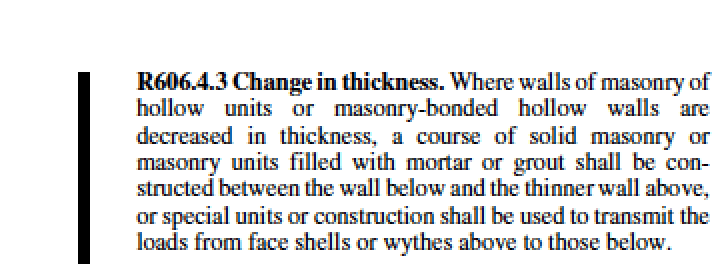XR250
Structural
- Jan 30, 2013
- 5,841
I posted this question at the end my previous post about repairing that foundation but I imagine it is off everyone's radar at this point.
"I know it is common practice to grout the course below a thickness change in the masonry. Is this in the IRC or ACI530 anywhere?
This was discussed here where the long lost KootK questioned its necessity. I imagine the builder will be wanting not to do that."
"I know it is common practice to grout the course below a thickness change in the masonry. Is this in the IRC or ACI530 anywhere?
This was discussed here where the long lost KootK questioned its necessity. I imagine the builder will be wanting not to do that."

